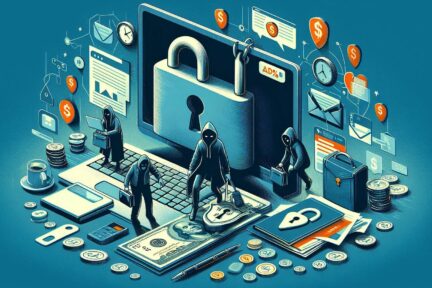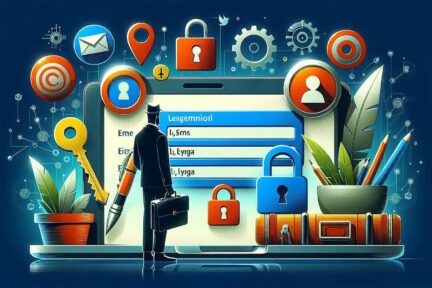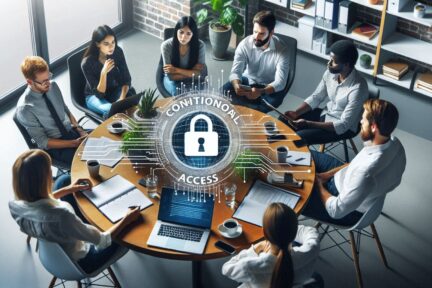The number of apps and web tools employees use regularly continues to increase. Most departments have about 40-60 different digital tools that they use. 71% of employees feel they use so many apps, making work more complex.
Many of the apps that we use every day have various alerts. We get a “ping” when someone mentions our name on a Teams channel. We get a notification popup that an update is available. We get an alert of errors or security issues.
App fatigue is real, and it’s becoming a cybersecurity problem. The more people get overwhelmed by notifications, the more likely they are to ignore them.
Just think about the various digital alerts that you get. They come in:
Some employees are getting the same notification on two different devices. This adds to the problem. This leads to many issues that impact productivity and cybersecurity.
Besides alert bombardment, whenever the boss introduces a new app, that means a new password. Employees are already juggling about 191 passwords. They use at least 154 of them sometime during the month.
When digital alerts interrupt your work, you can feel like you’re always behind. This leads to ignoring small tasks seen as not time-sensitive. Tasks like clicking to install an app update.
Employees overwhelmed with too many app alerts tend to ignore them. When updates come up, they may quickly click them away. They feel they can’t spare the time right now and aren’t sure how long it will take.
Ignoring app updates on a device is dangerous. Many of those updates include critical security patches for found vulnerabilities. The device and its network are at a higher risk when not installed. It becomes easier to suffer a successful cyberattack.
Another security casualty of app fatigue is password security. The more SaaS accounts someone must create, the more likely they are to reuse passwords. It’s estimated that passwords are typically reused 64% of the time.
A credential breach is a key driver of cloud data breaches. Hackers can easily crack weak passwords. The same password used several times leaves many accounts at risk.
Some alerts are okay to turn off. For example, do you need to know every time someone responds to a group thread? Or just when they @name you? But turning off important security alerts is not good.
A breaking point comes when one more push notification can push someone over the edge. They may turn off all the alerts they can across all apps. The problem with this is that in the mix of alerts are important ones, such as an anti-malware app warning about a newly found virus.
It’s unrealistic to go backwards before all these apps were around. But you can put a strategy in place that puts people in charge of their tech and not the other way around.
From both a productivity and security standpoint, fewer apps are better. The fewer apps you have, the less risk—also, the fewer passwords to remember and notifications to address.
Look at the tools that you use to see where redundancies may be. Many companies are using two or more apps that can do the same function.
Consider using an umbrella platform like Microsoft 365 or Google Workspace. These platforms include several work tools, but users only need a single login to access them.
It’s difficult for users to know the most important types of notifications. Set up their app notifications for them. This ensures they aren’t bombarded yet are still getting the important ones.
A cybersecurity best practice is to automate device and software updates. This takes the process out of employees’ hands. It enhances productivity by removing unnecessary updates from their view.
Automating device updates through a managed services solution improves security. It also mitigates the chance that a vulnerable app will put your network at risk.
Employees may never turn off an alert because they fear getting in trouble. Managers may need to realise that constant app alert interruptions are hurting productivity.
Communicate with employees and let them know they can communicate with you. Discuss how to use alerts effectively. As well as the best ways to manage alerts for a better and more productive workday.
Today, it’s easy for cloud tools to get out of hand. Get some help consolidating and optimising your cloud app environment. Give us a call today.
You need the best IT support in London. Technology is complicated and expensive. It’s so hard to maintain everything and know what to do when something breaks or goes wrong. IT problems can put a damper on your day. They’re frustrating, time-consuming, and seem like a never-ending cycle of issues.
Penntech’s average NPS score over 90 days is 84. The average Net Promoter Score (NPS) for IT Managed Service Providers (MSPs) can vary. Still, an NPS of around 50 is considered excellent in this industry, with scores above 70 exceptional and rare.
We offer our services on a trial basis for the first three months because we’re confident in our delivery and approach.
Penntech offers a wide range of IT services, from strategic project management to 24/7 remote support, ensuring all your IT needs are always covered.
We provide advanced cybersecurity measures and expertise, including penetration testing services and Cyber Essentials, to protect clients from cyber threats.
We offer Clients the ability to scale IT services up or down based on their needs. This flexibility is crucial for businesses that experience seasonal changes or rapid growth.
Other providers often enforce their preferred IT stack, but we don’t, as IT is not a one-size-fits-all solution.
We ensure our Clients’ business continuity through robust disaster recovery and backup solutions.
With experience in various verticals and industries, Penntech understands different businesses’ unique IT challenges and can provide customised solutions..
Contact us today or explore the range of support packages on offer.


Business owners often have to wear many hats, from handling HR and marketing tasks to managing the finances. One task…

Cool Windows 11 Features That May Make You Love This OS
Microsoft released the Windows 11 operating system (OS) over a year ago. It was well-received mainly with reviews as stable…

6 Ways to Prevent Misconfiguration (the Main Cause of Cloud Breaches)
Misconfiguration of cloud solutions is often overlooked when companies plan cybersecurity strategies. Cloud apps are typically quick and easy to…

4 Proven Ways to Mitigate the Costs of a Data Breach
No business wants to suffer a data breach, but unfortunately, it’s difficult to avoid them in today’s environment. Approximately 83%…

The benefits of AI include advancing our technology, improving business operations, and much more. Adoption of AI has more than doubled…

Leading Password Managers for Personal and Business
We hope that your business is already considering a password manager system, but there’s still the matter of finding the…

What’s Changing in the Cybersecurity Insurance Market?
Cybersecurity insurance is still a pretty new concept for many SMBs. It was initially introduced in the 1990s to provide coverage for large enterprises. It covered things like data processing errors and online media.

What are the advantages of implementing Conditional Access?
It seems that nearly as long as passwords have been around, they’ve been a major source of security concern. Eighty-one…

Cybersecurity Review 2023: Top Threats and Trends
As we delve into 2023, the cybersecurity landscape has never been more dynamic and crucial to our digital lives. From…

Essential Cybersecurity Tips to Safeguard Your Digital
In today’s hyper-connected world, protecting your digital life is more crucial than ever. With cyber threats lurking around every corner,…

Cybersecurity Guidelines: Must-Know Tips!
In an increasingly digital world, protecting your online presence is more critical than ever. Cybersecurity breaches are no longer just…

Cybersecurity Steps to Secure Your Data
In today’s digital age, protecting your data is more critical than ever. Cyber threats are constantly evolving, and it’s crucial…

Cybersecurity: Navigating Emerging Threats and Opportunities
In today’s digital age, cybersecurity has become a critical concern for businesses and individuals alike. As technology continues to evolve,…

How Service Cloud Transforms Customer Experience
In today’s competitive business landscape, delivering exceptional customer experiences is paramount. Service Cloud, a powerful customer service platform, has revolutionised…

A Comprehensive Guide to Cybersecurity Audits for Businesses
In today’s digital age, cybersecurity is of utmost importance for businesses. Cybersecurity audits play a crucial role in protecting sensitive…

IT Service Management for Modern Businesses
In today’s digital age, IT Service Management (ITSM) has become a cornerstone for modern businesses. As companies increasingly rely on…

Essential Skills Every Cybersecurity Engineer Must Master
In the ever-evolving field of cybersecurity, engineers must arm themselves with a diverse array of skills to defend against the…